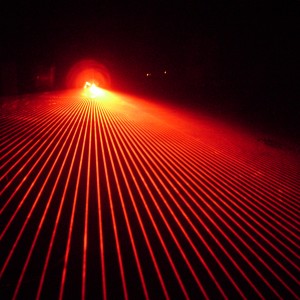
Low level laser therapy (LLLT) uses red light to stimulate hair growth. Two recent clinical trials investigated the use of a home-use LLLT helmet device (iGrow helmet, Apira Science) in men1 and women2 with androgenetic alopecia. The bicycle-like apparatus was used in the home for 25 minutes, every other day for 16 weeks, totaling 60 treatments. Patients in the control group used an identical helmet, but with incandescent red lights. These clinical trials were double-blinded, meaning that patients and the doctor evaluating treatments did not know which device (LLLT or control red light) a person had used.
Forty one men completed the clinical trial, 22 in the LLLT group and 19 in the control group. Pictures of the scalp were taken before treatment (baseline) and after treatment, with the area of interest being the vertex area of the head where hair loss was occurring. At the end of treatment (16 weeks), the percent increase in hair counts from baseline was calculated for each person. LLLT produced an increase in hair counts of 35% as compared to the control treatment. An average increase of 30.4 hairs/cm2 was observed in the LLLT group, compared to an average decrease of -0.11 hairs/cm2 in the control group.
Forty two women completed the clinical trial, 24 in the LLLT group and 18 in the control group. The procedure was similar as above, with pictures taken before and after treatment. The area of interest was again the vertex area of the head and the percent increase in hair counts from baseline was calculated for each person. LLLT produced an increase in hair counts of 37% as compared to the control treatment. An average increase of 35.2 hairs/cm2 was observed in the LLLT group, compared to an average increase of 8.39 hairs/cm2 in the control group.
In both clinical trials, there were no adverse side effects reported. The LLLT helmet device was safe and effective in increasing hair growth in men and women with androgenetic alopecia. In men, there was an average increase in hair of 35% and in women, an average increase of 37%. These clinical trials, at 4 months, were shorter than other clinical trials that have been conducted. Depending on the individual, it may take up to 6 months before one can determine whether LLLT is effective.
References:
- Lanzafame RJ, Blanche RR, Bodian AB, Chiacchierini RP, Fernandez-Obregon A, Kazmirek ER. The growth of human scalp hair mediated by visible red light laser and LED sources in males. Lasers Surg Med 2013;45:487–95.
- Lanzafame RJ, Blanche RR, Chiacchierini RP, Kazmirek ER, Sklar JA. The growth of human scalp hair in females using visible red light laser and LED sources. Lasers Surg Med 2014;46:601–7.












